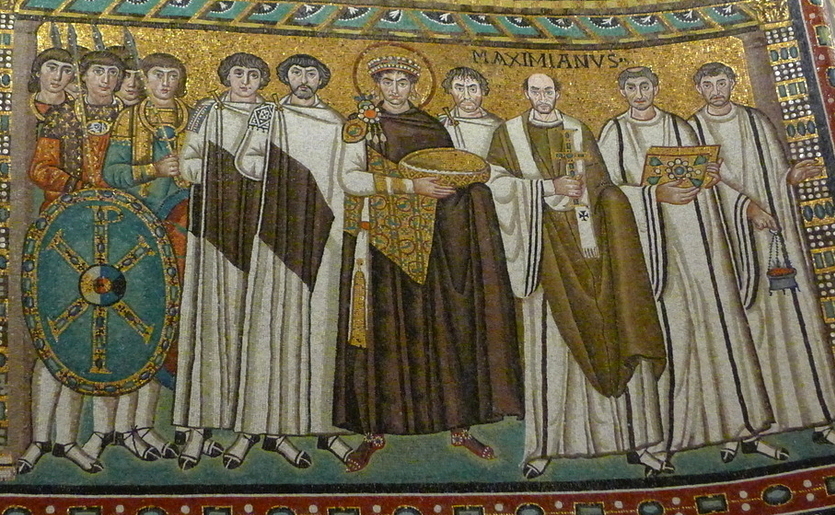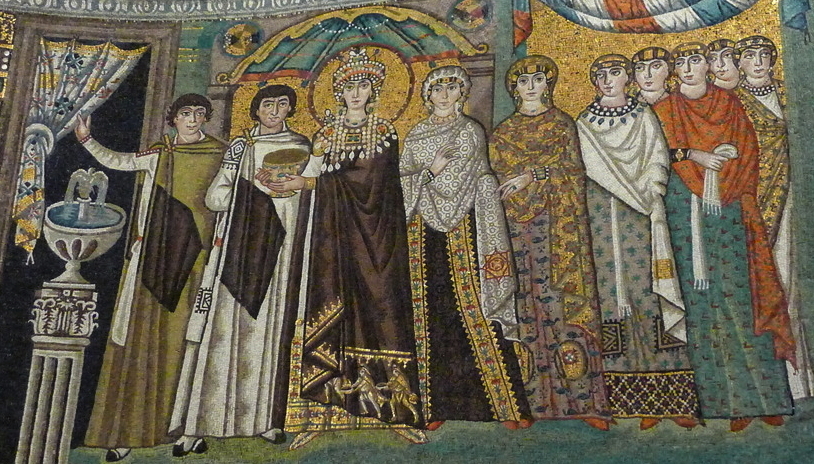








The 6th century mosaics in the Basilica of San Vitale, Ravenna, Italy, have been drawing pilgrims, art historians and lovers of beauty for nearly a millennium and a half.
In all my Italian travels, how did I avoid visiting Ravenna for so long? It was always slightly out of my way, easy to postpone. My art history textbooks had given Ravenna’s mosaics–particularly those at the Basilica of San Vitale–a huge buildup, and the truth is, I had a feeling, fear even, that seeing them might spoil me for anything that followed. When I finally felt ready, the experience was more profound than I’d ever imagined.
San Vitale is one of the most important examples of early Christian Byzantine art and architecture in western Europe, with extravagant Byzantine mosaics the largest and best preserved outside of Constantinople.
What does Byzantine mean? Headquartered in Constantinople (present-day Istanbul), the Byzantine Empire, or Byzantium, was the Roman Empire in the east. While the Western Roman Empire collapsed in the 5th century AD, Byzantium thrived for another thousand years until it fell to the Ottoman Turks in the 15th century.
Under Justinian I (born c. 482, Emperor from 527-565 AD), the Byzantine Empire regained much of the Mediterranean territory lost to the Ostrogoths, including Rome. In 540, they reclaimed Ravenna, bringing all the opulence of the Byzantine court to the city. San Vitale is the only major church from Justinian’s reign to survive in almost perfect condition and demonstrates the apex of Byzantine power, wealth, technology and artistry.
In portrait panels on either side of the apse, Justinian and Empress Theodora eternally attend mass with their retinues.

Justinian’s determined gaze and five-o-clock shadow attest to masculine power and vigorous governance.

Theodora. Gold and glass make garments shimmer like silk. Skin is realistically modeled with matte marble.
Though there are eight sites in Ravenna on UNESCO’s World Heritage list, I couldn’t tear myself away from San Vitale. I finally wandered out, hours later, too overwhelmed to look for or at anything else. I would feel like that for weeks. On the drive back to Venice, I gazed out the window as a flock of ducks burst out of autumn-gold marsh, flying low between the lagoon and sky. It struck me that by covering the basilica’s interior with birds, flowers and grasses of the Adriatic landscape, San Vitale’s master mosaicists were telling us that heaven is here. And eternity is now.

Biblical stories and Christian themes are set on a lush landscape of flora and fauna found around Ravenna and the Adriatic coast.

For those who remember to look down, a scallop shell guides pilgrims to trace the spiritual path of a labyrinth.